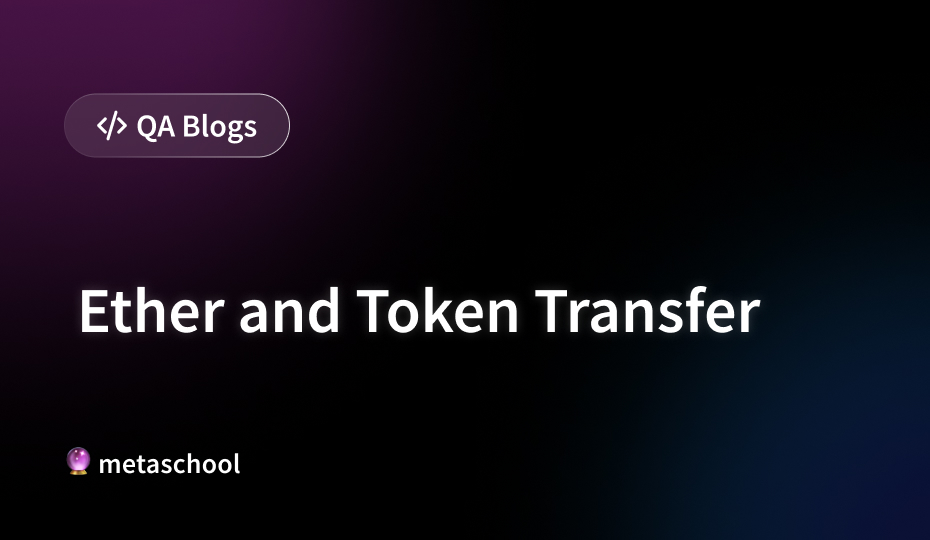Table of Contents
In the realm of blockchain and smart contracts, the ability to transfer assets seamlessly is paramount. Ether, the native cryptocurrency of the Ethereum network, and tokens built on top of it, represent value and utility within decentralized ecosystems. However, the process of transferring these assets comes with its own set of considerations, intricacies, and potential pitfalls. In this article, we delve into the nuances of Ether and token transfers, exploring best practices, common challenges, and strategies for secure transactions.
Understanding Ether and Tokens
Ether serves as the fuel for executing transactions and powering smart contracts on the Ethereum network. It is fungible and divisible, making it suitable for various transactions, from peer-to-peer transfers to executing complex smart contracts. Tokens, on the other hand, are digital assets created atop the Ethereum blockchain using smart contracts. These tokens can represent anything of value – from cryptocurrencies to digital assets, loyalty points, or even real-world assets – and facilitate a wide array of use cases, including fundraising through Initial Coin Offerings (ICOs), decentralized finance (DeFi) protocols, and non-fungible tokens (NFTs).
Transferring Ether
Transferring Ether between Ethereum addresses is relatively straightforward, typically involving the sender initiating a transaction specifying the recipient’s address and the amount of Ether to be sent. However, several considerations can impact the security and efficiency of Ether transfers:
- Gas Fees: Every transaction on the Ethereum network requires a certain amount of gas to execute. Gas fees, denominated in Ether, compensate miners for validating and including transactions in blocks. Understanding gas fees and setting appropriate transaction fees ensures timely execution and minimizes the risk of transactions getting stuck in the mempool.
- Confirmation Times: Ethereum transactions require confirmation by network validators (miners) to be considered final and irreversible. Confirmation times can vary depending on network congestion and gas fees paid. Users should consider transaction priority and adjust gas fees accordingly to avoid delays.
- Secure Transactions: Ensuring the security of Ether transfers involves safeguarding private keys and using secure wallets. Hardware wallets, such as Ledger or Trezor, offer enhanced security by storing private keys offline, protecting them from online threats like hacking or phishing attacks.
Transferring Tokens
Token transfers operate similarly to Ether transfers but involve interacting with smart contracts governing token issuance and transfer rules. When transferring tokens, users must consider the following:
- Contract Interaction: Token transfers require interacting with smart contracts implementing the token standard (e.g., ERC-20, ERC-721). Users must ensure they’re interacting with legitimate contracts and verify contract addresses to prevent falling victim to phishing or scam attempts.
- Approval Mechanisms: Some tokens require users to approve token transfers explicitly before initiating them. This mechanism prevents unauthorized transfers and enhances security but adds an additional step to the transfer process.
- Handling Token Metadata: In cases of non-fungible tokens (NFTs) or tokens with associated metadata, ensuring the accuracy and integrity of metadata during transfers is crucial. Metadata may contain essential information about the token’s ownership, attributes, or provenance, which should be preserved throughout transfe
Best Practices and Pitfalls
To ensure smooth and secure Ether and token transfers, consider the following best practices:
- Verify Transaction Details: Before confirming any transaction, double-check the recipient address, amount, and gas fees to avoid costly mistakes or fraudulent transfers.
- Keep Software Updated: Use the latest versions of wallets, client software, and smart contract interfaces to leverage security improvements and bug fixes.
- Utilize Multisig Wallets: For enhanced security, consider using multisignature wallets that require multiple approvals for transactions, reducing the risk of unauthorized transfers.
- Beware of Phishing: Exercise caution when interacting with wallets or smart contracts online, as phishing attacks are prevalent. Always verify the authenticity of websites, wallet addresses, and contract interactions.
Conclusion
Ether and token transfers play a vital role in the Ethereum ecosystem, facilitating value exchange and powering decentralized applications. By understanding the intricacies of these transfers and adhering to best practices, users can navigate the landscape with confidence, ensuring the security and efficiency of their transactions in the ever-evolving blockchain space.
